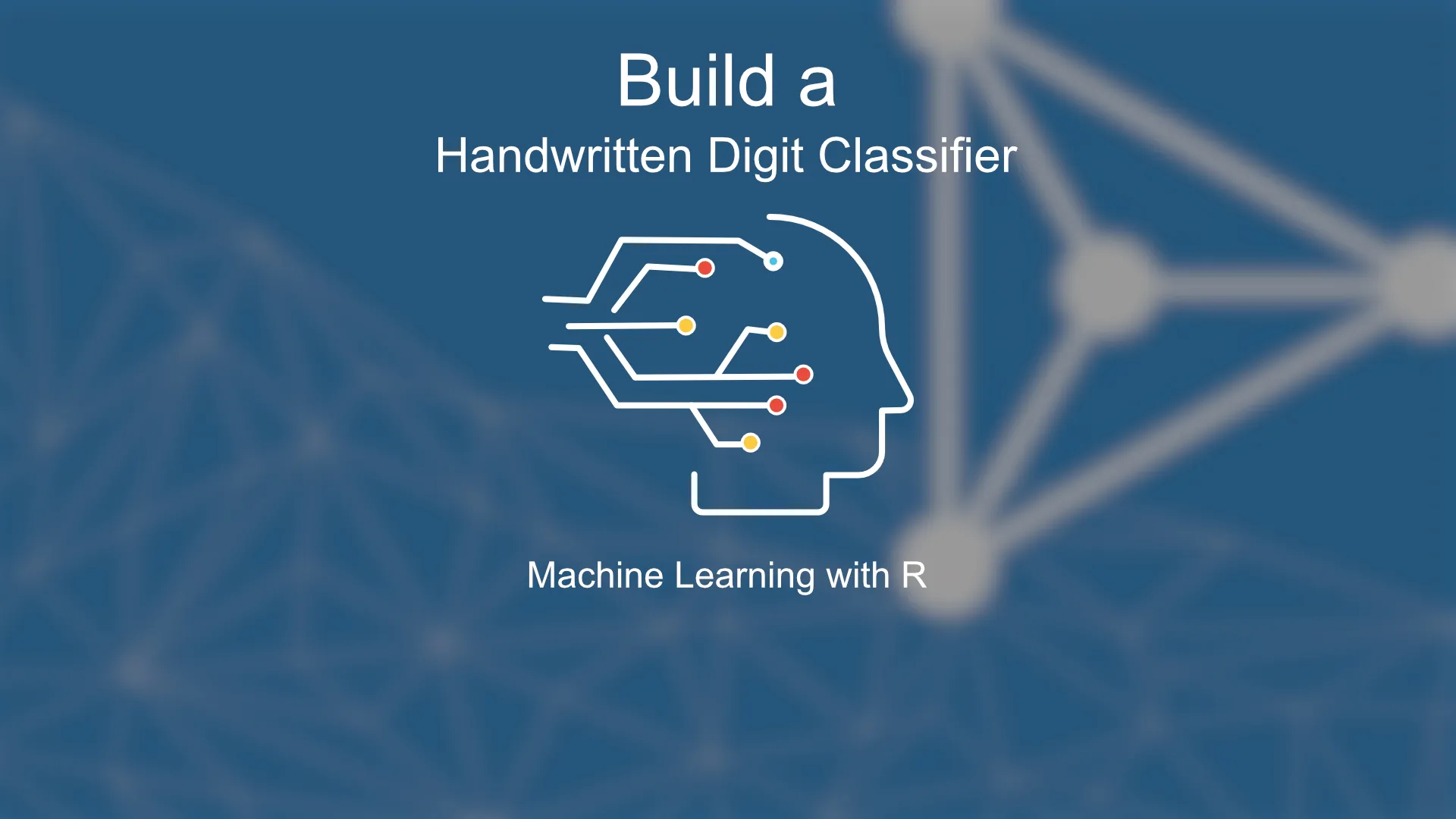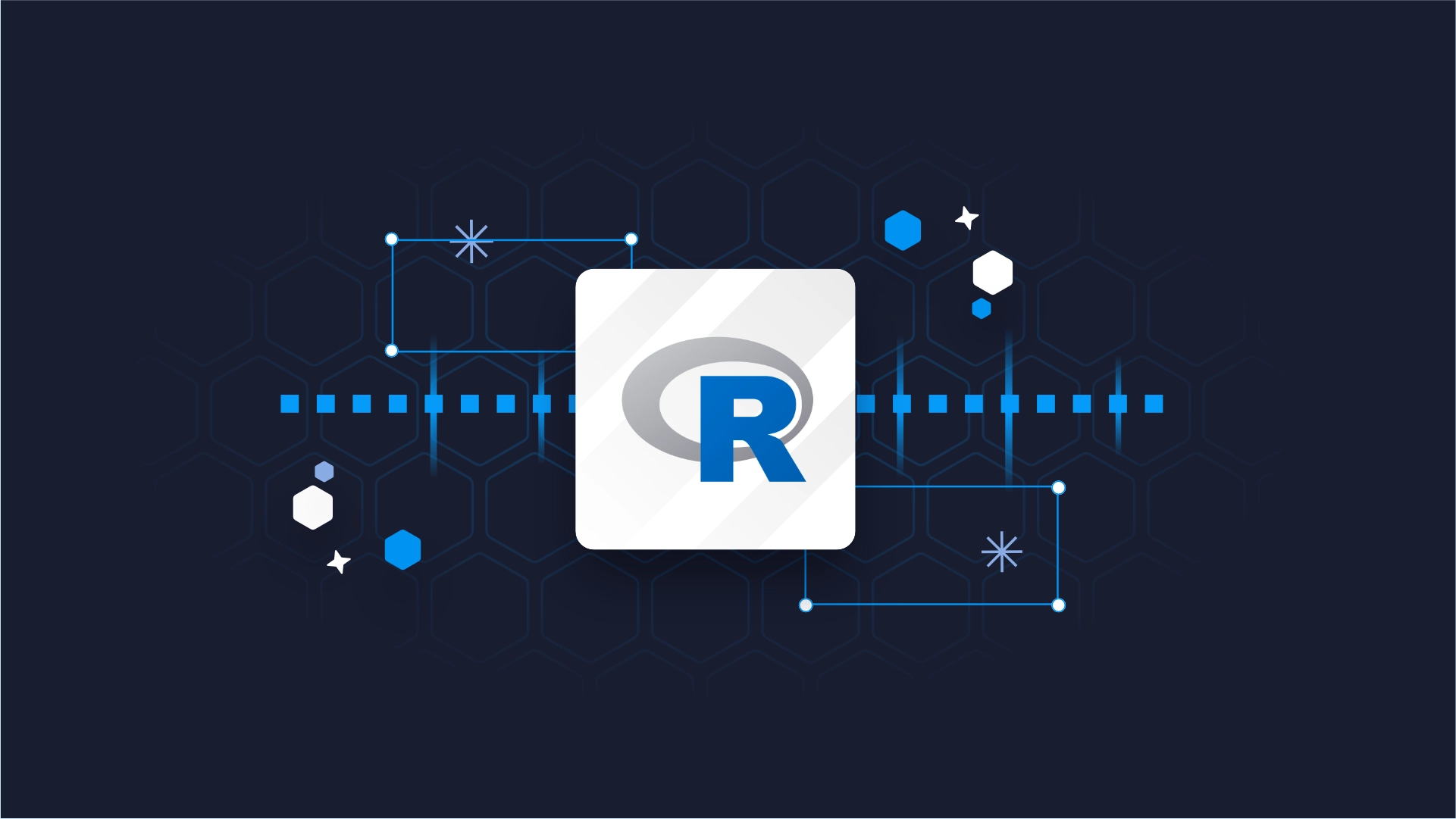How to Build a Handwritten Digit Classifier with R and Random Forests

<h2><span data-preserver-spaces="true">Build an MNIST Classifier With Random Forests</span></h2> <span data-preserver-spaces="true">Simple image classification tasks don't require deep learning models. Today you'll learn how to build a handwritten digit classifier from scratch with R and Random Forests and what are the "gotchas" in the process.</span> <blockquote><span data-preserver-spaces="true">Are you completely new to machine learning? </span><a class="editor-rtfLink" href="https://wordpress.appsilon.com/r-linear-regression/" target="_blank" rel="noopener noreferrer"><span data-preserver-spaces="true">Start with this guide on linear regression</span></a><span data-preserver-spaces="true">.</span></blockquote> <span data-preserver-spaces="true">Today's article is structured as follows:</span> <ul><li><a href="#introduction">Dataset Introduction</a></li><li><a href="#loading">Dataset Loading</a></li><li><a href="#training">Model Training</a></li><li><a href="#evaluation">Model Evaluation</a></li><li><a href="#conclusion">Conclusion</a></li></ul> <h2 id="introduction"><span data-preserver-spaces="true">Dataset Introduction</span></h2> <span data-preserver-spaces="true">MNIST is the "hello world" of image classification datasets. It contains tens of thousands of handwritten digits ranging from zero to nine. Each image is of size 28x28 pixels.</span> <span data-preserver-spaces="true">The following image displays a couple of handwritten digits from the dataset:</span> <img class="size-full wp-image-6613" src="https://webflow-prod-assets.s3.amazonaws.com/6525256482c9e9a06c7a9d3c%2F65b7d560109e5d60f59d3f97_d85d6fc4_1-3.webp" alt="Image 1 - MNIST dataset sample (source) " width="594" height="361" /> Image 1 - MNIST dataset sample (<a href="https://upload.wikimedia.org/wikipedia/commons/2/27/MnistExamples.png" target="_blank" rel="noopener noreferrer">source</a>) <span data-preserver-spaces="true">As you can see, these images should be relatively easy to classify. The most common approach is to use a neural network with a couple of convolutional layers (to detect patterns), followed by a couple of fully connected layers and an output layer (with ten nodes), but there's a simpler approach.</span> <span data-preserver-spaces="true">MNIST is a toy dataset, so you can replace the neural network architecture with something simpler, like random forests. This will require image flattening - from 28x28 to 1x784. In a nutshell, you'll end up with a tabular dataset of 784 columns (one for each pixel). More on the </span><em><span data-preserver-spaces="true">pros and cons</span></em><span data-preserver-spaces="true"> of this approach in a bit.</span> <span data-preserver-spaces="true">Let's load the dataset next and talk strategy afterward.</span> <h2 id="loading"><span data-preserver-spaces="true">Dataset Loading</span></h2> <span data-preserver-spaces="true">You can download both training and testing sets on </span><a class="editor-rtfLink" href="https://pjreddie.com/projects/mnist-in-csv/" target="_blank" rel="noopener noreferrer"><span data-preserver-spaces="true">this link</span></a><span data-preserver-spaces="true">. It's a CSV format instead of PNG, which eliminates the transformation process. </span> <span data-preserver-spaces="true">Keep in mind - the CSV's don't contain column names, so you'll have to specify <code>col_names = FALSE</code> when loading the files.</span> <span data-preserver-spaces="true">The following code snippet loads both sets and extracts the labels (actual digit class). Further, the snippet prints the first 20 labels from the training set:</span> <script src="https://gist.github.com/darioappsilon/614208d72e504c870749df00ba9bbd42.js"></script> <span data-preserver-spaces="true">The results are shown in the following image:</span> <img class="size-full wp-image-6614" src="https://webflow-prod-assets.s3.amazonaws.com/6525256482c9e9a06c7a9d3c%2F65b7d561b6953e1bff271727_ef21712b_2-3.webp" alt="Image 2 - First 20 digit labels from the training set" width="712" height="82" /> Image 2 - First 20 digit labels from the training set <span data-preserver-spaces="true">Note the Levels column - it's here because you've converted digits to factors with the <code>as.factor()</code> function.</span> <span data-preserver-spaces="true">Finally, let's see how many records there are for each digit:</span> <script src="https://gist.github.com/darioappsilon/d3c79cc20b1863826e5725e91df27401.js"></script> <span data-preserver-spaces="true">Here are the results:</span> <img class="size-full wp-image-6615" src="https://webflow-prod-assets.s3.amazonaws.com/6525256482c9e9a06c7a9d3c%2F65b7d5623e4ce0965306b3cd_ebf65ee8_3-3.webp" alt="Image 3 - Record count per digit class" width="798" height="74" /> Image 3 - Record count per digit class <span data-preserver-spaces="true">As you can see, the values aren't identical and range from around 5400 to 6700, but that shouldn't be too big of an issue for the classifier.</span> <span data-preserver-spaces="true">Next, let's see how you can train the model. Spoiler alert - it will require only a single line of code.</span> <h2 id="training"><span data-preserver-spaces="true">Model Training</span></h2> <span data-preserver-spaces="true">You'll use the Random Forests algorithm to build a handwritten digit classifier. As discussed before, this has some </span><em><span data-preserver-spaces="true">pros</span></em><span data-preserver-spaces="true"> and </span><em><span data-preserver-spaces="true">cons</span></em><span data-preserver-spaces="true"> when comparing to the neural network classifiers.</span> <span data-preserver-spaces="true">The biggest </span><em><span data-preserver-spaces="true">pro</span></em><span data-preserver-spaces="true"> is the training speed - the training process will finish in a minute or so on CPU, whereas the training process for neural networks can take anywhere from minutes (GPU) to hours (CPU) - depending on the model architecture and your hardware.</span> <span data-preserver-spaces="true">The downside of using Random Forests (or any other machine learning algorithm) is the loss of 2D information. When you flatten the image (go from 28x28 to 1x784), you're losing information on surrounding pixels. A convolution operation is a go-to approach for any more demanding image classification problem. </span> <span data-preserver-spaces="true">Still, the Random Forest classifier should suit you fine on the MNIST dataset.</span> <span data-preserver-spaces="true">The following code snippet shows you how to import the library, train the model, and print the results. The execution will take a minute or so, depending on your hardware:</span> <script src="https://gist.github.com/darioappsilon/629cf33a76c8daf52a8fa0857dbf3dde.js"></script> <span data-preserver-spaces="true">The results are shown in the image below:</span> <img class="size-full wp-image-6616" src="https://webflow-prod-assets.s3.amazonaws.com/6525256482c9e9a06c7a9d3c%2F65b7d56313d4a2a1c0faf6af_35b18a9f_4-3.webp" alt="Image 4 - Results of a random forests model" width="1302" height="720" /> Image 4 - Results of a random forests model <span data-preserver-spaces="true">As you can see, the confusion matrix for the training set is visible from the image above, alongside the classification errors.</span> <span data-preserver-spaces="true">We'll talk more about model evaluation in the next section.</span> <h2 id="evaluation"><span data-preserver-spaces="true">Model Evaluation</span></h2> <span data-preserver-spaces="true">The first metric you'll check is the overall accuracy. The random forest model gives you access to the error rate among all of the classes, so you can calculate the mean and subtract the result from 1.</span> <span data-preserver-spaces="true">1 - the error rate represents the accuracy. You can use the following code snippet to get the overall accuracy:</span> <script src="https://gist.github.com/darioappsilon/2e15272f309519727e5f989eb291be79.js"></script> <span data-preserver-spaces="true">The results are shown in the following image:</span> <img class="size-full wp-image-6617" src="https://webflow-prod-assets.s3.amazonaws.com/6525256482c9e9a06c7a9d3c%2F65b7d563d48dce80f00e11cd_48f7d149_5-3.webp" alt="Image 5 - Overall accuracy on the training set" width="220" height="42" /> Image 5 - Overall accuracy on the training set <span data-preserver-spaces="true">As you can see, the accuracy is around 95% overall. Not bad for a random forest classifier model.</span> <span data-preserver-spaces="true">Next, let's explore the error rate for every digit. Maybe some numbers are easier to classify than the others, so let's find out. You'll need the <code>dplyr</code> package for this calculation. You'll use it to select appropriate columns and calculate their means with the <code>colMeans()</code> function. Here's the entire code snippet:</span> <script src="https://gist.github.com/darioappsilon/e177cdd87ab4f33dc408ca74ff8fecdd.js"></script> <span data-preserver-spaces="true">The results are shown below:</span> <img class="size-full wp-image-6618" src="https://webflow-prod-assets.s3.amazonaws.com/6525256482c9e9a06c7a9d3c%2F65b7d564cba09eb75280d890_d00caaba_6-3.webp" alt="Image 6 - Average error rate for each digit" width="874" height="154" /> Image 6 - Average error rate for each digit <span data-preserver-spaces="true">As you can see, zeros and ones seem to be the easiest to classify, and fives and eights the hardest. It makes sense if you think about it.</span> <h2 id="conclusion"><span data-preserver-spaces="true">Conclusion</span></h2> <span data-preserver-spaces="true">This article demonstrated how you could use a simple machine learning algorithm for image classification. Keep in mind - this shouldn't be a go-to approach for more complex images. Just imagine you had 512x512 images. Flattening them would result in a dataset with more than 260K columns.</span> <span data-preserver-spaces="true">You should always use convolution operations when dealing with more complex image classification, as this operation will detect features of certain objects more accurately than a machine-learning-based approach.</span> <strong><span data-preserver-spaces="true">If you want to implement machine learning in your organization, you can always reach out to </span></strong><a class="editor-rtfLink" href="https://wordpress.appsilon.com/" target="_blank" rel="noopener noreferrer"><strong><span data-preserver-spaces="true">Appsilon</span></strong></a><strong><span data-preserver-spaces="true"> for help.</span></strong> <h1><span data-preserver-spaces="true">Learn More</span></h1> <ul><li><a class="editor-rtfLink" href="https://wordpress.appsilon.com/r-linear-regression/" target="_blank" rel="noopener noreferrer"><span data-preserver-spaces="true">Machine Learning with R: A Complete Guide to Linear Regression</span></a></li><li><a class="editor-rtfLink" href="https://wordpress.appsilon.com/r-logistic-regression/" target="_blank" rel="noopener noreferrer"><span data-preserver-spaces="true">Machine Learning with R: A Complete Guide to Logistic Regression</span></a></li><li><a class="editor-rtfLink" href="https://wordpress.appsilon.com/r-decision-treees/" target="_blank" rel="noopener noreferrer"><span data-preserver-spaces="true">Machine Learning with R: A Complete Guide to Decision Trees</span></a></li><li><a class="editor-rtfLink" href="https://wordpress.appsilon.com/r-for-programmers/" target="_blank" rel="noopener noreferrer"><span data-preserver-spaces="true">What Can I Do With R? 6 Essential R Packages for Programmers</span></a></li><li><a class="editor-rtfLink" href="https://wordpress.appsilon.com/object-detection-yolo-algorithm/" target="_blank" rel="noopener noreferrer"><span data-preserver-spaces="true">YOLO Algorithm and YOLO Object Detection: An Introduction</span></a></li></ul> <a href="https://appsilon.com/careers/" target="_blank" rel="noopener noreferrer"><img class="aligncenter size-large wp-image-6541" src="https://wordpress.appsilon.com/wp-content/uploads/2021/01/appsilon.hiring.20-1024x576.jpg" alt="" width="1024" height="576" /></a> <p style="text-align: center;"><strong><span data-preserver-spaces="true">Appsilon is hiring for remote roles! See our </span></strong><a class="editor-rtfLink" href="https://wordpress.appsilon.com/careers/" target="_blank" rel="noopener noreferrer"><strong><span data-preserver-spaces="true">Careers</span></strong></a><strong><span data-preserver-spaces="true"> page for all open positions, including </span></strong><a class="editor-rtfLink" href="https://wordpress.appsilon.com/careers/#r-shiny-developer" target="_blank" rel="noopener noreferrer"><strong><span data-preserver-spaces="true">R Shiny Developers</span></strong></a><strong><span data-preserver-spaces="true">, </span></strong><a class="editor-rtfLink" href="https://wordpress.appsilon.com/careers/#fullstack-software-engineer-tech-lead" target="_blank" rel="noopener noreferrer"><strong><span data-preserver-spaces="true">Fullstack Engineers</span></strong></a><strong><span data-preserver-spaces="true">, </span></strong><a class="editor-rtfLink" href="https://wordpress.appsilon.com/careers/#frontend-engineer" target="_blank" rel="noopener noreferrer"><strong><span data-preserver-spaces="true">Frontend Engineers</span></strong></a><strong><span data-preserver-spaces="true">, a </span></strong><a class="editor-rtfLink" href="https://wordpress.appsilon.com/careers/#senior-infrastructure-engineer" target="_blank" rel="noopener noreferrer"><strong><span data-preserver-spaces="true">Senior Infrastructure Engineer</span></strong></a><strong><span data-preserver-spaces="true">, and a </span></strong><a class="editor-rtfLink" href="https://wordpress.appsilon.com/careers/#community-manager" target="_blank" rel="noopener noreferrer"><strong><span data-preserver-spaces="true">Community Manager</span></strong></a><strong><span data-preserver-spaces="true">. Join Appsilon and work on groundbreaking projects with the world's most influential Fortune 500 companies.</span></strong></p>


.png)